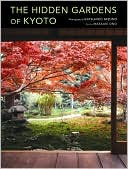Category Books
- Fiction Books & Literature
- Graphic Novels
- Horror
- Mystery & Crime
- Poetry
- Romance Books
- Science Fiction & Fantasy
- Thrillers
- Westerns
- Ages 0-2
- Ages 3-5
- Ages 6-8
- Ages 9-12
- Teens
- Children's Books
- African Americans
- Antiques & Collectibles
- Art, Architecture & Photography
- Bibles & Bible Studies
- Biography
- Business Books
- Christianity
- Computer Books & Technology Books
- Cookbooks, Food & Wine
- Crafts & Hobbies Books
- Education & Teaching
- Engineering
- Entertainment
- Foreign Languages
- Game Books
- Gay & Lesbian
- Health Books, Diet & Fitness Books
- History
- Home & Garden
- Humor Books
- Judaism & Judaica
- Law
- Medical Books
- New Age & Spirituality
- Nonfiction
- Parenting & Family
- Pets
- Philosophy
- Political Books & Current Events Books
- Psychology & Psychotherapy
- Reference
- Religion Books
- Science & Nature
- Self Improvement
- Sex & Relationships
- Social Sciences
- Sports & Adventure
- Study Guides & Test Prep
- Travel
- True Crime
- Weddings
- Women's Studies
Hidden Gardens of Kyoto »

Authors: Katsuhiko Mizuno, Masaaki Ono (Editor), John Bester
ISBN-13: 9784770029379, ISBN-10: 4770029373
Format: Hardcover
Publisher: Kodansha International
Date Published: June 2004
Edition: (Non-applicable)
Author Biography: Katsuhiko Mizuno
KATSUHIKO MIZUNO, the photographer, born in Kyoto in 1941, graduated from Doshisha University and the Tokyo College of Photography. His camera has been focused on his historic home town since 1969. In 2000 he renovated a Kyoto townhouse said to date from the latter half of the Edo period, converting it into a museum housing his photographic works. He has published over 110 books, including the English-language Landscapes for Small Spaces (Kodansha International), which won a Gold Medal in the Foreword 2002 Book of the Year Awards.
MASAAKI ONO, the author, born in Nara in 1947, graduated from Doshisha University. After studying garden design under the distinguished and influential Mirei Shigemori, he opened his own design office. Among his many projects have been gardens at Seirenji, Jotokuin, and Shojokein temples, as well as those he designed for teahouses, inns, and private residences.
Book Synopsis
Off the beaten track, not easily seen because in private or official hands, these are the hidden gardens of one of the world s great historic cities.
All the main types of Japanese garden are represented. First comes the pond garden, which on the grandest scale can be a match for the lake-wood-and-meadow parks of Western estates, and on a more modest scale still contains islands and bridges and pavilions. Then there is the dry landscape garden, whose gravel, rocks, and moss have an austerity remote from most Westerners idea of a garden, yet whose purpose, once understood, leaves an impression of dignity and resonance. And finally the tea garden, whose scrupulous simplicity belies great sophistication in the arrangement of its few components.
To a much greater degree than Western gardens, their enjoyment depends on knowing how to interpret them: how to look for the auspicious tortoise stones a wedge-shaped head poking out of the ground or the wings of a stone crane; the symbolic waterfall where no water flows; the bridge that crosses from this world into the next.
No better guides to these underlying attributes can be found than the photographer of this book, who has spent most of his life in the old capital, and the commentator, a professional garden designer who learned his craft from one of the twentieth century s greatest landscape gardeners. With their help we learn such things as why no flowers bloom in the tea garden, and why its paths are seldom straight; or why some scenery is best seen in passing from a boat rather than on dry land.
As a sequel to the acclaimed Landscapes for Small Spaces, this new appreciation of the traditional Japanese garden will give as much, if not more, pleasure, since part of its attraction is knowing that the gate into these gardens which might otherwise be closed is, in these pages, open to us all.
Los Angeles Times
Between these elegant covers-and only here-readers are treated to some of Kyoto's most exquisite gardens that never open to the public.
Table of Contents
Subjects
 Photography
Photography  Photography - Travel
Photography - TravelHome & Garden
 Gardening
Gardening  Chinese, Japanese, & Other Asian Gardens
Chinese, Japanese, & Other Asian GardensTravel
 Travel Photography
Travel Photography  Asian Travel Photography
Asian Travel Photography
